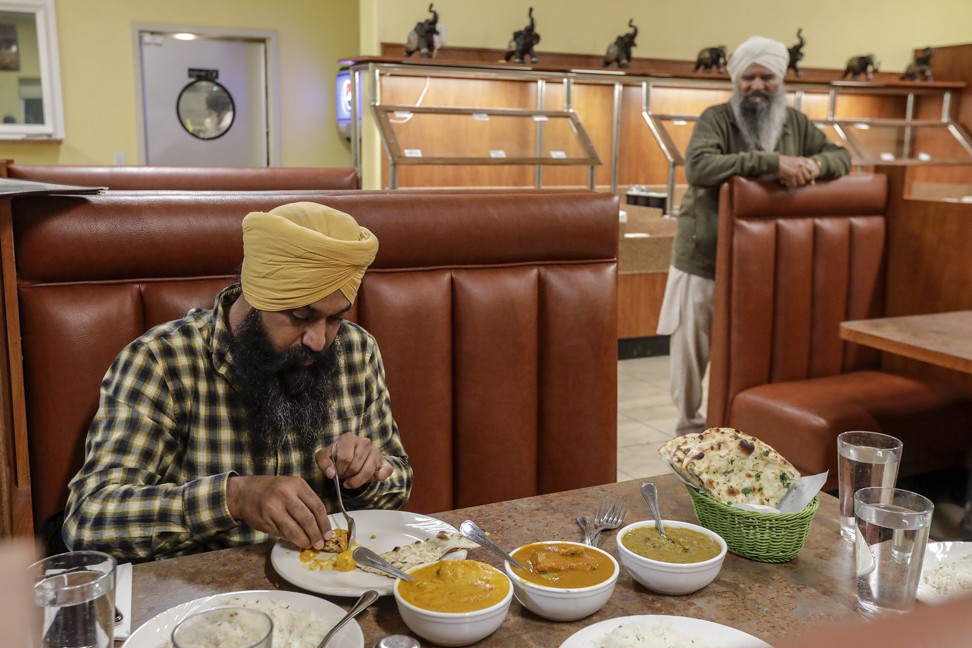
US trucking industry transforming as Sikh drivers take the wheel
- As a shortage of US truck drivers grows, Sikh immigrants – many driven from India because of religious persecution – are increasingly taking up the job
- Highways are dotted with Indian-American businesses that cater to truckers, as well as restaurants and temples modelled after truck stops back in India
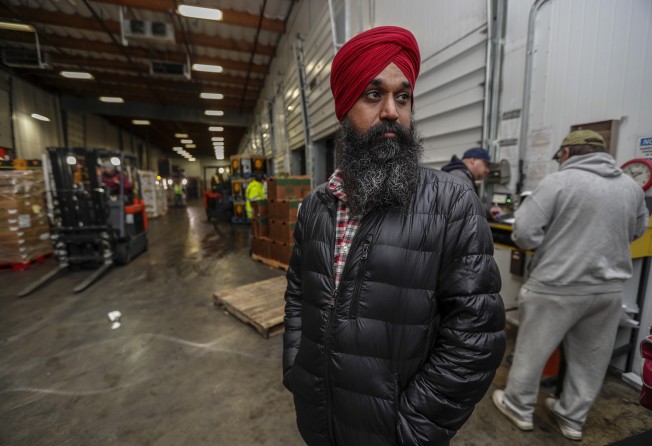
It is 7.20pm when Palwinder Singh rolls into Spicy Bite, one of the newest restaurants in the US state of New Mexico’s rural northwest. Locals in the town, Milan, population 3,321, have barely heard of it.
The building is small, single-storey, built of corrugated metal sheets. There are seats for 20. The only advertising is spray-painted on concrete roadblocks in English and Punjabi. Next door is a diner and fuel station; the county jail is across the road.
Singh – known as Pal on the road – orders creamy black lentils, chicken curry and roti, finishing it off with chai and cardamom rice pudding. After 13 hours on and off the road in his semi truck, he leans back in a booth as a Bollywood music video plays on TV.
“This is like home,” he says.

There are 3.5 million truckers in the United States. California has 138,000, the second most after Texas. Nearly half of those in California are immigrants, most from Mexico or Central America. But as retirement age nears for drivers – the average American trucker is 55 – and a shortage grows, Sikh immigrants and their children are increasingly taking up the job.
Estimates of the number of Sikh truckers vary. In California alone, tens of thousands of truckers trace their heritage to India. The state is home to half of the Sikhs in the US – members of a monotheistic faith with origins in 15th-century India whose followers are best recognised by the uncut hair and turbans many men wear. At Sikh temples in Sacramento, Fresno, Bakersfield and Riverside, most worshippers are truck drivers and their families.
Over the last decade, Indian-Americans have launched trucking schools, truck companies, truck washes, trucker temples and no-frills Indian restaurants modelled after truck stops back home, where Sikhs from the state of Punjab dominate the industry.
“You used to see a guy with a turban and you would get excited,” says Singh, who is in his 15th year of trucking. “Today, you go to some stops and can convince yourself you are in India.”
Three interstates – the I-5, I-80 and I-10 – are dotted with businesses owned by Indian-Americans that cater to truckers. They start to appear as you drive east from Los Angeles, Reno and Phoenix, and often have the words “Bombay”, “Indian” or “Punjabi” on their storefront signs. But many are anonymous dots on a map unless you’re one of the many Sikhs who have memorised them as a road map to America.
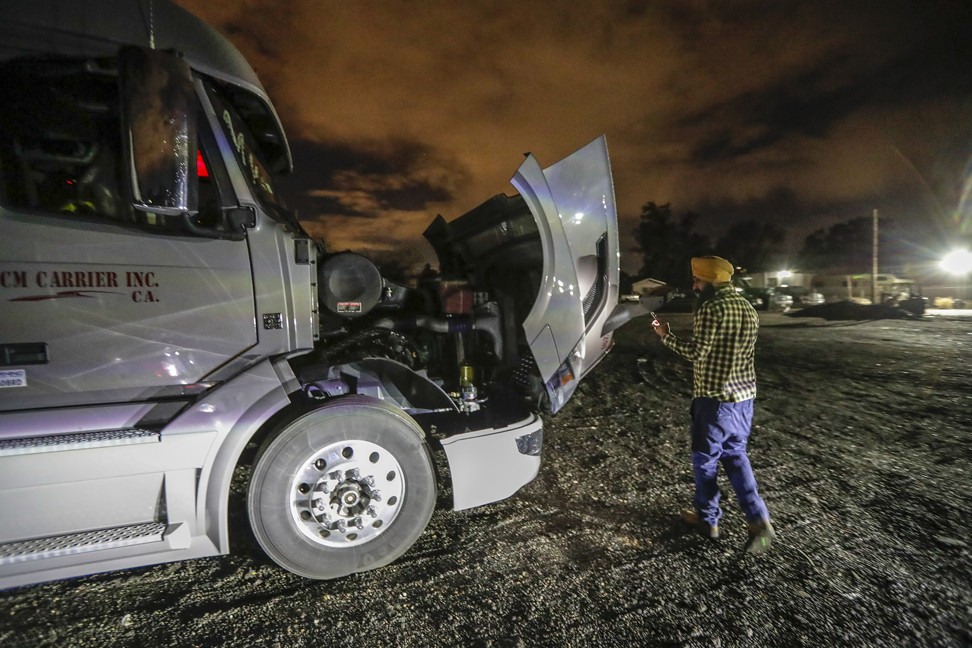
The best-known businesses are along Interstate 40, which stretches from Barstow, California to North Carolina. The road, much of it alongside the historic Route 66, forms the backbone of the Sikh trucking world.
It’s a route that Singh, 38, knows well. Over his career, he has driven two million miles (3.2 million kilometres) and transported items as varied as frozen chickens and paper plates. These days, he mostly hauls chocolate, rice, and fruits and vegetables from California farms to Indiana.
Punjabi Americans first appeared on the US trucking scene in the 1980s after an anti-Sikh massacre in India left thousands dead around New Delhi, prompting many to flee. More recently, Sikhs have migrated to Central America and applied for asylum at the Mexico border, citing persecution for their religion in India; some have also become truckers. Estimates of the overall US Sikh population vary, placing the community’s size between 200,000 and 500,000.
I love [driving]. But there are always two sides of the coin. If you love it, then you have to sacrifice everything. I have to stay away from home. But the thing is, this job pays me good
In recent years, companies have pleaded for new truckers. Walmart hiked up salaries to attract drivers. Last year, the government announced a pilot programme to lower the age for driving trucks from 21 to 18 for those with truck-driving training in the military. According to the American Trucking Associations, the trucker shortage could reach 100,000 in the coming years.
“Punjabis are filling the gap,” says Raman Dhillon, a former driver who last year founded the North American Punjabi Trucking Association. The Fresno-based group advises drivers on regulations, offers insurance and tire discounts, and runs a magazine called Punjabi Trucking.
“Thirty years ago, it was hard to get into trucking because there were so few people like us in the business who could help you,” says Rashpal Dhindsa, a former trucker who runs the Fontana-based Dhindsa Group of Companies, one of the oldest Sikh-owned US trucking companies. When Singh first started, Dhindsa – now a close friend but then an acquaintance – gave him a US$1,000 loan to cover training classes.

It is 6.36am the next day when the Petro Stopping Centre switches from quiet darkness to rumbling engines. Singh flips on the headlights of his truck, a silver 2016 Volvo with a 500-horsepower engine.
Inside the rig, he heats aloo gobi – spiced potatoes and cauliflower – that his wife prepared back home. He checks the thermostat to make sure his trailer isn’t too warm. He takes out a book wrapped in a blue cotton cloth that’s tucked by his driver’s seat, sits on a bed-turned-couch and reads a prayer in Punjabi for safety on the journey: “There is only one God. Truth is His name … You always protect us.”
Singh is not strict on dogma or doctrine, and he’s more spiritual than religious. Trucking has shown him that people are more similar than different no matter where you go. The best of all religions, he says, tend to teach the same thing – kindness to others, accepting whatever comes your way and appreciation for what’s in front of you on the road.
“When I’m driving, I see God through his creation,” he says.
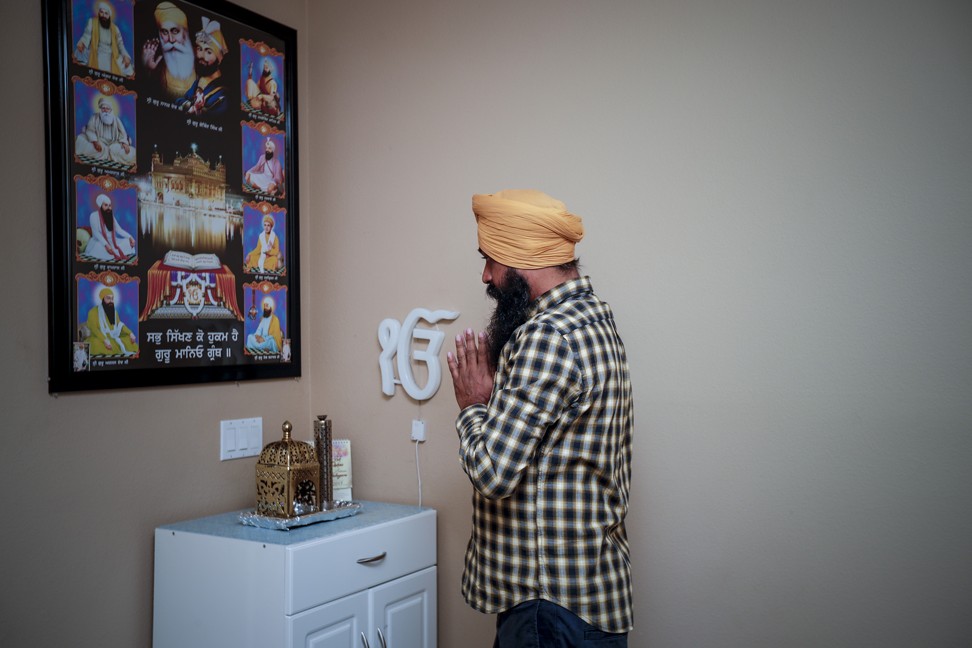
His favourite sights are the farms. You spot them in Central California while picking up pallets of potatoes and berries, or in Illinois and Indiana while driving through the corn and soybean fields.
They remind him of home, the rural outskirts of Patiala city, India.
Nobody in his family drove trucks. Still, to Singh, he’s continuing tradition. His father farmed potatoes, cauliflower, rice and tomatoes. As a child, Singh would ride tractors for fun with his dad.
Today, he has his own company, two trucks between himself and his brother – also a driver – and he bids on shipments directly with suppliers. Nationally, the average pay for a trucker is just above US$43,000. Singh makes more than twice that.
He uses the money to pay for the house he shares with his wife, Harjeet Kaur, his four-year-old son, brother and sister-in-law, nieces, and parents. Kaur threads eyebrows at a salon and video chats with him during lunch breaks. Every week before he leaves, she packs a duffel bag of his ironed clothes and stacked containers of food for the road.
“I love it,” Singh says about driving. “But there are always two sides of the coin, head and tail. If you love it, then you have to sacrifice everything. I have to stay away from home. But the thing is, this job pays me good.”
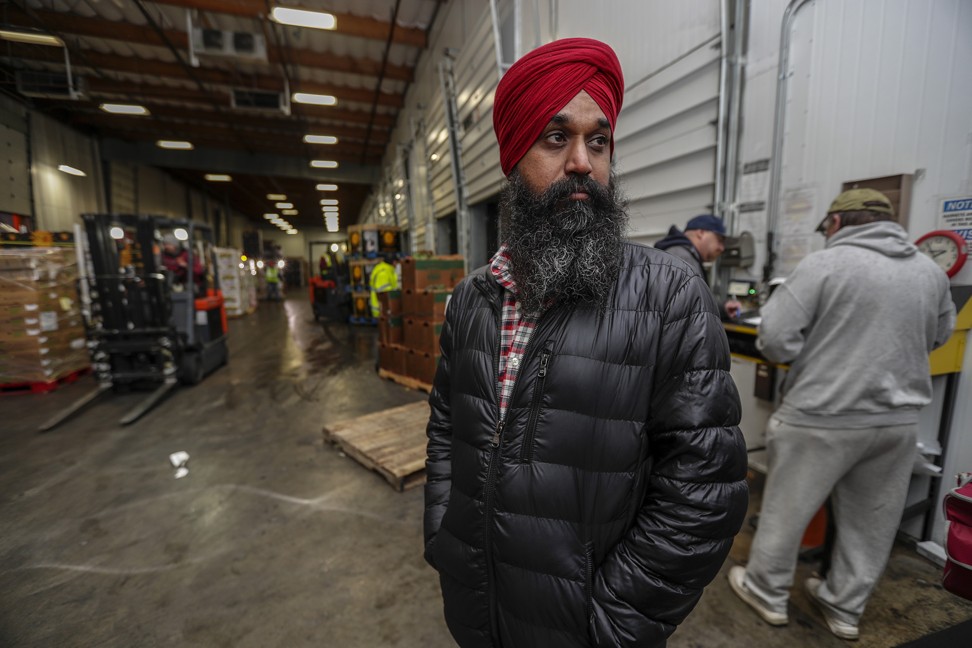
Trucking has helped Singh find his faith, he says. When he moved to the US, he used to shave, drink beer and not care much about religion. But as he got bored on the road, he started listening to religious sermons. Twelve years ago, he began to grow his hair again and quit alcohol; drinking it is against the faith’s traditions. Today, he schedules shipments around the temple calendar so he can attend Sikh celebrations with his family.
“I don’t mind questions about my religion. But when people say to me, ‘Why do you not cut your hair?’ they are asking the wrong question,” Singh says. “The real question is, why do they cut their hair? God made us this way.”
It’s 4.59pm when he arrives in Sayre, Oklahoma, at Truck Stop 40. A yellow Punjabi-language billboard advertises it as the I-40 starts to bend north in a rural region two hours from Oklahoma City.
Among the oldest Sikh truck stops, number 40 has a 24-hour vegetarian restaurant, convenience store, fuel station and a housing trailer that functions as a temple – all spread over several acres.
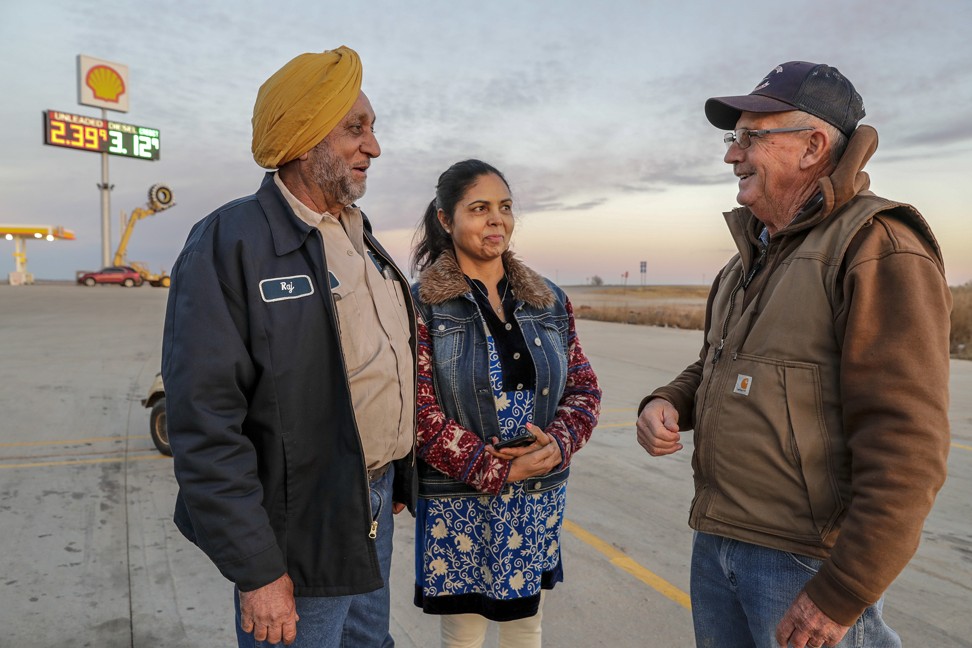
Singh has been coming here for more than a decade, since it was a mechanic shop run by a Sikh former trucker who settled on the plot for its cheap land. When he has time, he lingers for a meal. But he’s in a rush to get to Joplin, Missouri, for the night so he can make his drop-off the next day.
He grabs a chai and heads to the temple. Resting on a small pillow upon the altar is the Guru Granth Sahib, the Sikh holy book. An audio tape plays prayers on a loop. A print of Guru Nanak, the faith’s founder, hangs on the wall.
Singh prostrates and leaves a few dollar bills on the floor as a donation for upkeep. He prays for God to protect the temple, his family and himself on the 891 miles that remain until he hits the Indianapolis suburbs.
“This feels like a long drive,” he says. “But it’s just a small part of the journey of life.”